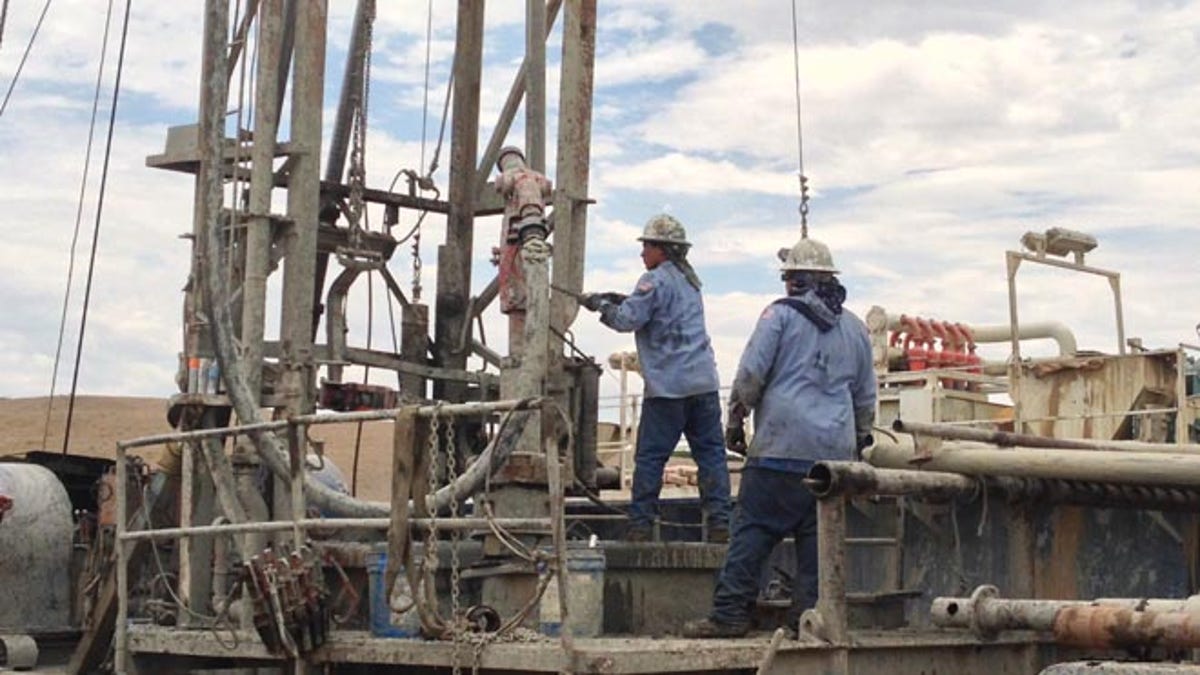
Water well drilling rig in California on Tuesday, July 2014. (Fox News)
Erected on the edge of hundreds of acres of crops in Kern County, Calif., crews are currently working around the clock on a massive well. At first glance, you may think they’re drilling for oil. But this project is digging for something of a different value.
Third generation farmer Devon Yurosek and his family have invested heavily in the two thousand foot water well on their farmland. In the midst of the worst drought in California’s history, the Yuroseks need water to help grow pistachios, pomegranates and cherries.
Their well is just one of a number popping up throughout the area.
“We saw the writing on the wall with zero allocations coming from the district and realized we had to act at the time,” Yurosek says.
This year California farmers have seen little to no rain and many, like the Yuroseks, have received zero water from the state.
They’re not alone.
In fact, so many drought stricken farmers want water wells, drilling companies have seen orders spike.
"I've never seen it like this. In 2011 we only drilled two large wells it was so bad we had to lay off 40 percent of the employees. Now I've got more than I can handle," Matt Rottman, with Rottman Drilling, says. Rottman currently has a two-year wait list to drill new wells that can cost more than half-a-million dollars.
With the backlog, many farmers and even Tulare County residents, like Richard Gaylord, are desperate for water but simply have to wait.
“Absolutely one-hundred percent frustrating especially when you have family and animals and plants to grow and things to take care of and you have to ration exactly what you need,” Gaylord says.
Gaylord, a volunteer firefighter, offers a tour of his bone-dry property. Goats, hogs, horses, dogs and cats roam freely or in pens depending on the time of day.
“It’s going to get to a point where we may have to decide whether we need to continue to live here or move and if we move and we drop the house it’s not worth anything. No water, no value,” Gaylord says.
But with so many wells being constructed across California, critics and even some farmers worry that the ground water is being used faster than it can replenish.
“Based on the information the state has this region on the valley floor is being over drafted which means more water is coming out than is being replenished,” Denise England, a Senor Administrative Analyst with Tulare County’s Water Resources Department, says.
That concern is even shared by some of those responsible for drilling the wells.
“It is a concern because this is how I make my livelihood and this is how the growers make their livelihood. If there’s no more ground water, I’m going to run out of wells to drill and the growers aren’t going to be able to grow anything,” Rottman says. He adds that drilling companies need to make sure they don’t drill too many wells in one area.
Law makers in California are currently considering a bill that would require local agencies to track and possibly restrict ground water pumping.
The Yuroseks, who applied for a drilling permit back in 2013, welcome the water, but say they’re still only pumping half of what they need.
“Everybody is more or less in the same boat that we’re in. We’re trying to keep our crops alive and keep our people employed and unable to do that without water coming in from the districts,” Yurosek says.




